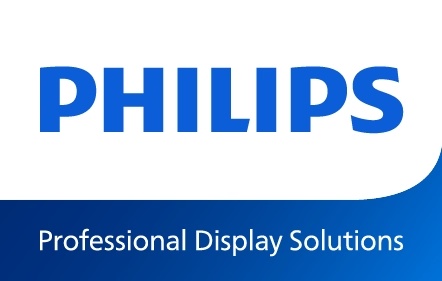Building personalised learning into the classroom with display technology
As the importance of providing a more personalised approach to individuals continues to be recognised throughout life, personalised learning has become a key focus in modern education. Tailoring instruction to the needs, strengths, and interests of individual students reaps results.

Technology, particularly display technology such as digital whiteboards and interactive displays, plays a vital role in making personalised learning more engaging and effective, while also keeping it connected to the core. By using display technology, teachers can create dynamic, adaptive learning environments that cater to students' diverse learning styles.
Here, the education specialists at PPDS delve into developing personalised learning in the classroom using display technology:
1. Differentiated instruction through interactive displays
Interactive displays enable differentiated instruction, where teachers can cater to different learning preferences, abilities, and paces within a single lesson. These include:
Group work: Teachers can split students into groups and assign different tasks or problems based on their proficiency levels. The interactive display can show different activities or rotate through them, keeping all students engaged.
Tailored feedback: With collaborative displays, such as the Philips Collaboration 4152 display, teachers can offer immediate, personalised feedback to students during activities, guiding them to success while also helping them progress at their own pace.
In this way, students who are visual learners may benefit from graphic representations or diagrams shown on the interactive board, while auditory learners can listen to explanations or narrations.
2. Data-driven customisation
Display technology can also integrate with assessment and learning management systems to provide real-time data on student progress. Teachers can use this data to adjust the difficulty of the material they provide, offer extra support, or challenge more advanced students. Here is how data can drive personalised learning:
Adaptive content: Displays that are connected to educational software, such as Philips Genius, can show personalised content based on each student’s needs. For example, quizzes or activities can be adjusted in difficulty based on prior performance.
Progress visualisation: Teachers can display progress charts and graphs that help students visually track their learning journey, helping them to set personal goals and motivating them to more.
3. Enhanced student engagement
Using digital displays can help make learning more interactive and engaging, tailored to the generations of today. These can be especially beneficial for students who may struggle with traditional teaching methods.
Gamification: Digital displays can host gamified learning platforms where students work through educational games that adapt to their level, encouraging both competition and self-improvement.
Interactive lessons: Interactive whiteboards, built in to displays such as the Philips Collaboration Series, allow students to actively participate by solving problems, moving items on the screen, or collaborating on digital projects. This hands-on approach can be customised to each student's pace, while supporting them to engage with their peers and hone their communication skills.
This kind of engagement keeps students focused and makes it easier to address the diverse needs in the classroom, while also keeping them connected as a group.
4. Accessible learning for all students
Display technology can help make learning more accessible to students with differing needs. By personalising the way content is delivered on the digital display, teachers can ensure all students have equal access to learning opportunities:
Text enlargement and audio assistance: Digital displays allow teachers to adjust the size of text or add closed captions, depending on the students in the room. Connected displays, such as the Philips Collaboration 4152 display, augments this, allowing students with additional needs to engage on their own devices, as well as on the big screen.
Assistive learning tools: Integration with text-to-speech or speech-to-text applications allows students with disabilities to engage with the content more easily.
5. Blended and flipped learning
Display technology supports blended and flipped learning models, which are perfect for personalised learning. In these models, students can use technology to engage with learning material both in and outside the classroom at their own pace:
Flipped classroom: Teachers can use digital displays to review and discuss material that students have already engaged with at home. This frees up class time for more personalised learning and one-on-one support.
Blended learning: Teachers can alternate between traditional instruction and digital lessons, using education displays and software to cater to different learning preferences.
6. Collaborative and peer learning
Digital display technology enhances collaboration, enabling students to work together while still following personalised learning paths in a communal setting. Here are some ways to promote collaborative learning:
Group projects on interactive displays: Either directly onto the display or via their personal device, students can work together to solve problems or create presentations, with each student contributing according to their strengths.
Peer teaching: Display technology can facilitate peer teaching, in which students explain concepts to each other. The visual, interactive nature of the digital display makes it easier for peers to understand and engage with the material.
7. Creative expression and project-based learning
Display technology can be used to support project-based learning and creative expression, encouraging students to explore their own interests and develop those into their work.
Digital presentations: Students can create and present projects using their personal devices connected to the interactive display, which makes their work more visible and enhances peer learning.
Interactive simulations and visualizations: Students can engage with complex concepts through simulations, 3D models, and virtual tours, enabling deeper understanding and personalised exploration.
Incorporating personalised learning into the classroom
Incorporating personalised learning into the classroom is essential for creating an environment in which all students are set to thrive. Digital display technology provides an effective platform for delivering content in varied and engaging ways, adapting to individual learning styles, and ensuring equitable access to education.
By leveraging the capabilities of today’s connected, collaborative interactive displays, teachers can create a dynamic, flexible, and personalised learning environment that caters for the diverse needs of today’s students.


